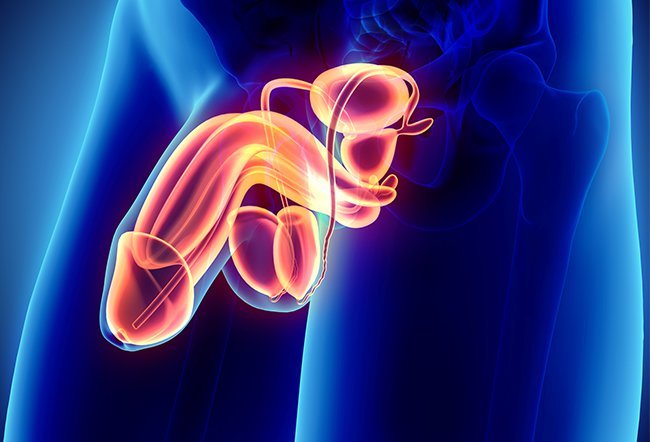
Priapism occurs due to blood being trapped in the penis. If left untreated, it can lead to scarring and erectile dysfunction. Learn about how priapism is aspirated
Priapism is a persistent, painful erection of the penis unrelated to sexual desire or arousal. Priapism occurs due to blood being trapped in the penis. If left untreated, it can lead to tissue damage and permanent erectile dysfunction.
The first line of treatment for priapism involves aspiration with the use of sympathomimetic drugs or α-adrenergic agonists such as phenylephrine injected directly into the penis, with a reported resolution rate of 80%. Aspiration for priapism is done at the 2 to 3 o’clock or the 9 to 10 o’clock position near the penile base.
How is aspiration performed for priapism?
- Preparation
- A sterile field is created using drapes and cleaning the entire penis including the lateral aspect (sides) and base with alcohol or an antimicrobial solution.
- Procedure
- A dorsal penile block is performed using plain lidocaine for local anesthesia.
- Once the block has completely anesthetized the penis, a large-bore butterfly needle (16 or 18 gauge) is placed into the corpora cavernosa or corpus cavernosum (erectile tissue in the penis) at a perpendicular angle to the penis through the shaft laterally at the 2 to 3 o’clock or the 9 to 10 o’clock position near the penile base.
- Once the needle has been placed, aspiration can be attempted using a 20- to 30-mL syringe.
- Slight aspiration is done initially to confirm that the needle is in the right place while milking the shaft.
- Irrigation with normal saline is needed if the blood has thickened.
- After saline injection, aspiration is attempted again.
- If no progress has been made after performing this step multiple times, phenylephrine injection is given in approximately 200 µg increments (1,000 µg being the maximum dose).
- A mixture of 1 ampule of phenylephrine is diluted with an additional 9 mL of normal saline (1:1000) and 0.3 to 0.5 mL is injected using a 29-gauge needle.
- The needle is removed to see if the priapism resolves in the next 10 minutes.
- Post-procedure
- Gauze and a self-adherent wrap are placed on the puncture site to help prevent penile hematoma (blood collection in the tissues).
What are different types of priapism?
- Nonischemic
- Non-emergent and comparatively painless condition
- Also known as high-flow priapism (comprises less than 5% of total cases)
- Result of a ruptured artery caused due to an injury to the penis or the perineum (area between the scrotum and anus)
- Ischemic
- Medical emergency
- Also known as low-flow or veno-occlusive priapism (accounts for over 95% of total cases)
- Result of blood being trapped in the erection chambers
- Most commonly affects men with sickle-cell disease, leukemia (blood cancer), or malaria
- Associated with devastating complications including erectile tissue necrosis (tissue death), and fibrosis (scarring)
What causes priapism?
Although more common in men in their 30s, priapism can begin in childhood in males with sickle cell disease. Risk factors include the following:
- Sickle cell anemia (approximately 42% of all adults with sickle cell disease will eventually develop priapism)
- Certain medications such as Desyrel (used to treat depression), thorazine (used to treat certain mental illnesses), injection therapy for erectile dysfunction, antianxiety agents (hydroxyzine), anticoagulants (heparin, warfarin) and antihypertensives
- Hematologic disorders such as glucose-6-phosphate deficiency (G6PD) and hereditary spherocytosis
- Trauma or injury to the spinal cord or genital area such as straddle injury, coital injury, pelvic trauma and intracavernous injection needle injury
- Infections from black widow spider bites, scorpion stings, rabies, or malaria
- Carbon monoxide poisoning
- Neurogenic disorders such as syphilis, cauda equina syndrome, autonomic neuropathy, lumbar disc herniation, spinal stenosis, stroke, and brain tumor
- Abuse of drugs such as alcohol, marijuana, and cocaine
- Metabolic disorders such as amyloidosis, Fabry disease, and gout
- Anxiety disorders such as obsessive-compulsive disorder, post-traumatic stress disorder, and panic disorder
- Latrogenic disorders caused by revascularization surgery, intracavernous needle injury, aor shunt surgery

QUESTION
Testosterone is a chemical found only in men. See Answer
How is priapism treated?
Treatment for priapism aims to make the erection subside and preserve the ability to have erections in the future.
Treatment options include:
- Ice packs: Ice is applied to the penis to reduce swelling
- Surgical ligation: In cases of arterial rupture, the doctor can ligate the artery to restore normal blood flow
- Intracavernous injection: Drugs such as alpha-agonists are injected into the penis
- Aspiration: The penis is numbed and a needle is inserted to drain blood from the penis
- Medications:
- Low-dose phosphodiesterase type 5 inhibitors
- Antiandrogenic agents such as ketoconazole
- Tropic and trophic analogs, such as leuprolide acetate and stilbestrol
- Surgical management: Shunting procedures are used to divert blood flow and encourage circulation to go back to normal
Latest Men’s Health News
Daily Health News
Trending on MedicineNet
Medically Reviewed on 5/5/2022
References
Priapism. Cleveland Clinic: https://my.clevelandclinic.org/health/diseases/10042-priapism
How I treat priapism. American Society of Hematology: https://ashpublications.org/blood/article/125/23/3551/34113/How-I-treat-priapism
Penile Injection And Aspiration. NIH: https://www.ncbi.nlm.nih.gov/books/NBK557696/